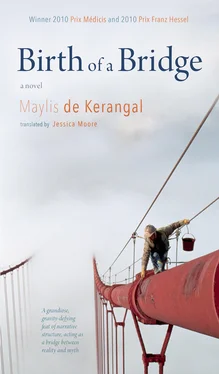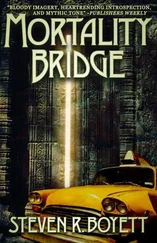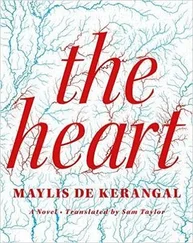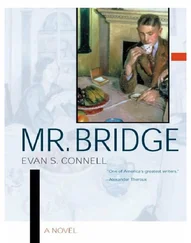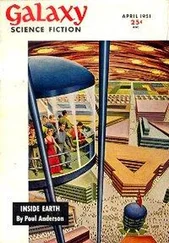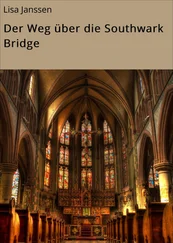SO THE BOA wants his bridge. Not just any arch, not just any viaduct hastily dreamed up but a bridge in the image of the new Coca. He wants something large and functional, he wants at least six lanes — a freeway over the river. He wants a unique creation. Scans his debtors, his acquaintances, expresses his desire but no one sends back the interpretation he’s waiting for. In secret, he grabs a piece of paper and a pen and does some sketches of his own, but no matter how fast he draws his lines, trying to capture a pure form — ridiculous at the moment, and touching: dishevelled, maladroit, and miming the gesture of the artist — he can’t quite get it. One of his councillors cleverly suggests that he launch a contest. Such a subject requires expertise, prestige, an architect whose glorious career will carry the ambitions of the city as high and as far as possible. The Boa sees himself as a Medici, a princely patron in a velvet cape, likes himself even more, and far from taking offence, he accepts that a foreign glory could come to build upon his land, thereby raising his own glory higher.
WAS IT BETTER TO CLUTTER UP THE EARTH RATHER than the sky? Was it best to demonstrate strength, opt for a powerful creation, a combination of massive, heavy pieces like the bridge in Maracaibo? Was it best to choose a transparent, ethereal work, a construction that concentrated the material into only a few elements, an option with finesse, like the Millau Viaduct? Was it best to open a city up or weld two landscapes together, to defer to nature, use its lines, and incorporate the structure into it? The Boa can’t decide, he wants everything. He wants innovation and reference, a flourishing enterprise, beauty, and the world record. A man arrives with the solution. His name is Ralph Waldo, he comes from São Paulo: an architect who is both famous and a mystery. He enters the room for the contest auditions, hands free and calm alongside his body, and describes the form that gathers the areas together: to illustrate the adventure of migration, the ocean, the estuary, the river, and the forest, the vined walkway above gorges and the span that plays above the void, he has chosen a highly technological hammock; to demonstrate suppleness and strength, flexibility and resistance to seismic shifts, he has chosen a nautical web of cables and massive concrete anchorings; to symbolize the ambitious city, he has chosen two steel towers planted in the riverbed, skyscrapers power emitters energy catchers; to evoke the myth, he has chosen red. That is, a suspension bridge of steel and concrete. The architect announces measurements comparable to those of the longest suspension bridges in the world, most of them estuary or ocean channel bridges. Length: 6,200 feet; centre suspension span: 4,100 feet; width: 100 feet; height of the deck above the water: 230 feet; height of the towers: 750 feet. A delusion of grandeur, like an enormous desire contained within a very small body. Just the presence of the bridge in the heart of Coca, Waldo assures them, will make the city seem bigger, more open, and more prosperous — a simple trick of proportions in relation to the harmonics of the space, the perception of a crossing greater than that of a bridge, an optical singularity.
GIVE ME THE PLANS AND I’LL BUILD YOU WHAT YOU want, whatever it is, even a bridge to hell — Diderot’s smoking in his office on the twentieth floor of the Héraclès tower, La Défense district, Paris, in front of the bay window, a black mass backlit against the baby-blue pane, large-format man overlooking a confetti capital electrified by Friday night departures — give me the plans, goddammit, the plans, that’s all I need.
THE CHAIRMAN and CEO of Héraclès, interrupted in his flummeries, stepped back and smiled, flinging a folder onto the table, and at the blunt sound of cardboard against the wood — a smack that echoed in the room like a starter’s gun — Diderot took an enormous breath, inflating his rib cage exaggeratedly, and furtively lowered his eyelids: it was happening, the site was his. He didn’t turn around right away towards the messenger, rather savoured the good news: he wouldn’t end on the construction of a new wing in some famous private museum, the addition on a nuclear power plant, or the digging of an umpteenth ultramodern parking lot in a provincial city, no, the men from Comex (the board of execs at Héraclès) were giving him a bridge to close his career, a coronation, managerial shenanigans — he would keep his mouth shut, contain his disgust, would let them come congratulate him, pat him on the shoulder, conclusive slaps that would make him want to smash his fist into their hypocritical faces, but he wouldn’t do anything, would take what he could get, a bridge, would mime docile pride and, as for the rest, the crown and the cajoling, that would all be postmarked return to sender: all he cared about was the work to be done. Of course they would talk within the company, gossip about him getting the field marshal’s baton, Héraclès owes you a lot, thank you my friend, and the young engineers who had rushed into the ranks at the announcement of the opening of the site would have no trouble grumbling in the hallways ’cause, shit, Georges Diderot may have been a legend, but he’s old now, his management methods are frankly not clean cut and he’s not from the inner circle — not a young jackal from the famous École Polytechnique (the X) with ants in his pants, not a showman from the prestigious engineering school les Mines or head of the class at the ParisTech, not a supersonic brain lubricated with force diagrams, functions with multiple variables, derivatives, strength-of-material analyses, Euclidean spaces, and Fourier series. Diderot’s was a complex career, difficult to follow, more lateral than vertical, hybridized to the extreme with all kinds of skills, a mix of freelance star and in-house engineer come in through the back door and ended up reigning over Comex, a guy who smokes in the elevator, who calls janitors and CEOs alike by their first name.
WHEN DIDEROT finally turned around, the man who he ironically called the Grand Chief was in the doorway of his office, and with a raise of his eyebrows indicated the folder, you’ve got some reading to do. Inside the mundane cover were the results of the first surveys done by geotechnicians in Coca and the specifications for the work. Seated at his desk, Diderot flipped through the surveys — which were ordered in reverse.
On the first sheets, he recognized his language, he was at home. Measurements, tables, graphs — these results gave a precise illustration of data from probes recently placed on the ground in Coca, homing devices armed with little explosive charges whose deflagrations were analyzed — noise and propagation of shock waves — in order to understand the reality of the material, its internal morphology, the content of its constitution, its potential. For Diderot, these notes held something terribly moving: it was like reading what reverberates from the little taps of the white cane that the blind person makes against the ground simply in order to walk upon it — but here they had to construct their own white canes, so that they could be trusted — invent them and then manipulate them with care so that they hit the ground correctly, with clean, sharp little taps. This was the perceptible, tender description of a gigantic trial and error and it contained exactly what he loved — this resembled real life.
NIGHT HAD long since fallen and the tower emptied out when he finally took a look at the quantitatives, numbers that lined themselves up or lay themselves out in columns over several pages. Numbers that speak only of themselves, the young ones (formerly moles running through the corridors of graceless high schools) would have said; numbers that have to be coaxed to speak, Diderot would have retorted, rubbing his hands together. These measurements involved other things besides themselves, a certain temporality, an organization of the work. A million cubic yards of concrete. Eighty thousand tons of steel. Eighty thousand miles of cable. Diderot absorbed these figures without letting himself be impressed, whispered them to himself, and quickly translated and prolonged their meaning: planning the construction of an on-site concrete mixing plant and anticipating the delivery of its components — cement, gravel, water, sand — foreseeing the steel supplies, coordinating their transport to Coca, and above all, once they reached the Pontoverde platform, having them brought to the bridge site beside the river. There would be quarrels among the engineers — the partisans of the land route would argue for the construction of pathways — roads or rails — that would avoid lengthy and expensive load changes, since the metal would be loaded at its production sites in the steel factories of Blackoak Inc. in Maryland, New Jersey, and Pennsylvania and unloaded directly at the foot of the bridge piers; while those partisans of the marine route would argue for the smoothness and convenience of floating barges that would migrate along the river, and these latter, Diderot among them, would win out.
Читать дальше
